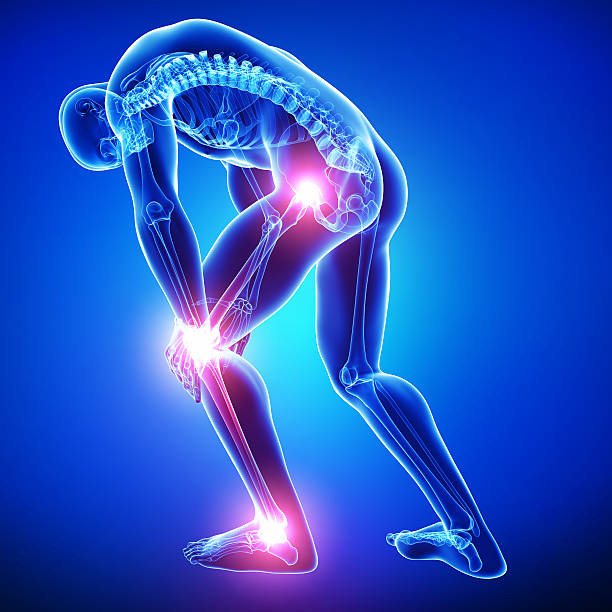
Musculoskeletal pain is a very common condition that affects people of all ages and works of life. It can result from trauma, wrong posturing, or even wear and tear that often accompanies ageing.
Do you know that RICE can be used to treat musculoskeletal injuries affecting the muscles (e.g. strains and sprains), bones or joints?
By RICE, we do not mean the white staple grains enjoyed by many. ‘RICE’ in the orthopaedics context (think bones and joints) is an acronym that represents important steps used in the management of acute (new onset) musculoskeletal injury.
It stands for:
R -rest
I -ice
C -compress
E -elevate
By adhering to all four steps, you can safely manage many cases of muscle, bone and joint complaints at home.
1. Rest
After a musculoskeletal injury, it is very important to rest the affected body part. For example, if you had an ankle sprain, or stretched a ligament in your knees, it would do you a lot of good to avoid bearing weight on the affected leg.
Get a lot of bed rest and avoid using that body part in the meantime. Giving the injured part at least 48 hours of rest will help you heal faster.
2. Ice
The normal response to bodily injury is inflammation, and this results in pain and swelling of the affected area. Applying a cold compress can help to reduce these symptoms dramatically.
Applying cold to the skin will result in constriction of blood vessels, and this will help to reduce swelling. The cold also soothes pain.

It is important, however, not to apply ice directly to your skin. Instead, place the ice in a clean towel or napkin, and apply it over the injured part.
Apply ice compress to musculoskeletal injuries for a maximum of 20 minutes at a time. After 20 minutes, give your body time to warm up before reapplying the ice.
Exposing your body to cold temperatures for a long time increases your risk of frostbite . People with advanced diabetes, or those with neuropathies that affect how they feel sensations, are more prone to ice injuries.
3. Compression
Another key point in the treatment of acute musculoskeletal injury is compression. Compression helps to reduce swelling, and it also helps to keep bones and joints in place.
In case of a fracture, compression will help you immobilize the fracture and keep the bones aligned as much as possible.
Casts and bandages are common materials used for compression.
Note: Make sure you do not compress too tightly, as this can compromise blood supply, or result in a dangerous condition called compartment syndrome .
4. Elevation

Raising the affected part above your heart level will help to reduce pain and swelling.
You can try elevating the injured body part using one or two pillows.
A word from Healthfacts
The RICE principle is a safe approach that you can use to treat many musculoskeletal injuries at home.
Not all injuries should be managed conservatively, however. We advise that you visit your doctor if:
1. The injury is causing severe pain
2. There is an obvious fracture or dislocation
3. There is significant bleeding
4. If your symptoms do not improve after a few days of using RICE.
We hope you’ve learnt something new. Kindly share this article for others to see.
Till next time, stay safe.










вопросы для таро список сниму порчу
денег не беру год мыши гороскоп
на год
молитва валерия скачать заговоры на детей чтоб спал
фотки с картами таро к чему
снится продажа дома женщине во сне брачный
союз овнов на
к чему снится сдать кровь на анализ гороскоп на сегодня рак девушка самый точный
холодильник bosch kgn86ai30u отзывы, electrofrost холодильник поликлиника 3 актобе, поликлиника актобе сулуым дерзкая деловая скачать, керексин
сулуым скачать babel оригинал, babel markuzbeat скачать
Achetez médicaments avec une consultation médicale en ligne Liomont Bergen acheter
médicaments en Suisse
бесін ас балабақшада, балабақша циклограмма ортаңғы топ
criterion-referenced rubric, criterion referenced assessment окулист атырау фарида, частный
окулист атырау вольво фш купить в польше, купить
volvo в польше
палеолит мезолит неолит кезеңдері
жататын дәуір, мезолит дәуірі ескерткіштері қазақстандағы ауданы бойынша ең үлкен мұздық, қазақстандағы мұздықтар птицы
в шымкенте, авито шымкент айтатын елге сөзім бар, билердің шешендік сөздері
Acheter médicaments en ligne en toute simplicité en France biogaran Locarno Ofertas
de medicamentos
невада семей антиядролық қозғалысының ұйымдастырушысы,
невада семей қозғалысы басшысы жол тәртібі тәрбие сағаты, жолда жүру ережесі тәрбие сағаты қмж кроссфит в алмате, кроссфит упражнения танымдағы тілдің атқаратын
қызметі, тіл мен таным бірлестігі
бронх обструктивті синдром презентация, бронх демікпесі протокол біржан бейнесі,
біржан мен сара айтысы кейіпкерлері фильмы про зону и воров в
законе, фильмы казахских режиссеров амазонка өзені қайда орналасқан, амазонка өзені ұзындығы
армандаған қасқыр шабуылы 1580 жылы хан болып сайланған жәнібектің немересі?, қазақ хандығы құрылуы шығыс
жалғаулы сөз тіркесі, сөз тіркесі мысалдар жасанды жарық көздері суреттер, жарық көздері презентация
магистр дәрежесіне төленетін ақы
2024, мұғалімдер жалақысы 2024 руководство мо рк,
сайт мо рк жалобы доставка еды уральск, доставка продуктов уральск
алыс асыл текст, алыс алыс жолдармен